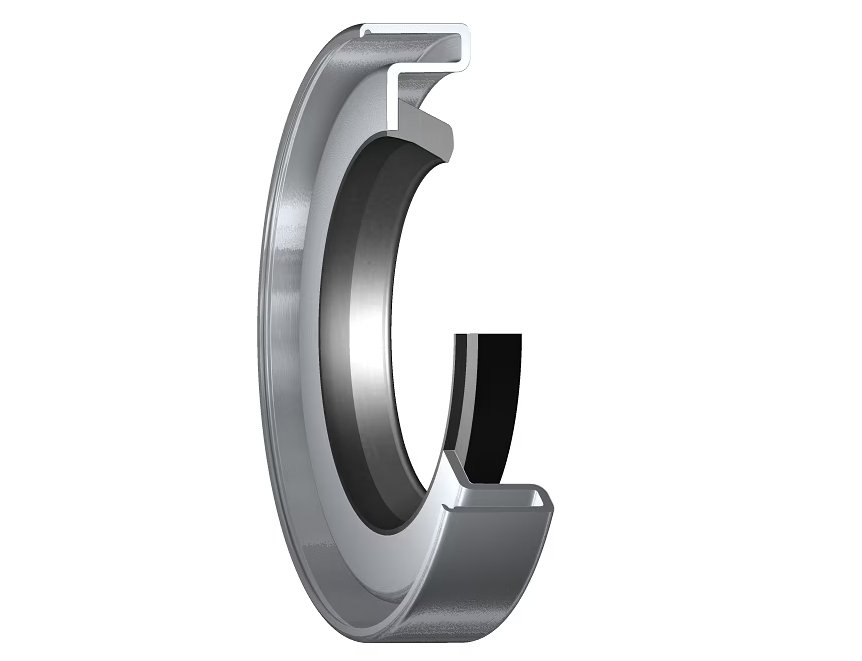When you use industry machinery that handle fluid materials or fine grains, you’ve probably noticed ring-like rubber seals seated near the junction or the lid. These are commonly known as seals. Seals such as O rings are pretty common in hydraulic, automotive, industrial, aerospace, and numerous other applications. Though they appear to be just “rubber rings” to the naked eye, they are quite distinctive in their functionalities.
Depending on the direction they experience the compressive force from the machine or the elements, the seals fall into two main categories: the Radial Seal and the Axial Seal.
Let’s briefly find out what they are and how they are unique to their applications.
Table of Contents
ToggleRadial Seal
These seals experience the majority of the compressive force on their sides, which means the external force or pressure works on the inner and outer diameters of the ring. Take a syringe, for example. When we reciprocate the plunger inside the syringe’s barrel, the outer surface of the seal prevents leakage around the circumference and undergoes a frictional force parallel to the motion. Similarly, the inner surface of the seal deals with the plunger’s downward motion.
Radial seals are ubiquitous in applications requiring reciprocating or rotating shafts. They can be further divided into Static and Dynamic Radial Seals.
Axial Seal
Much like vertically squeezing a doughnut, these rings deal with forces that work perpendicularly on their top and bottom surfaces. Unlike radial seals, these can withstand a significant amount of compressive or static pressure. You’ll find them on valves, flanges, pumps, and other hydraulic and pneumatic systems that have a chance to leak fluid or air. Due to their high compressibility, they’re more common on the face of flange-type applications.

Radial Seal vs Axial Seal: Comparison
Let’s take a side-by-side look at how the two seals differ from each other in various parameters.
| Parameter | Radial Seal | Axial Seal |
| Mechanism | Forces work on the outer and inner circumference. | Forces work on the top and bottom surfaces. |
| Materials | Elastomers Metals PTFE Other composite materials. | PTFE Elastomers Metal |
| Shape | Usually circular, with a lip or edgethat hugs the shaft or rod. | It can be either flat or conical. |
| Primary Applications | Hydraulic pumps Axles Gearboxes Power steering systems Transmissions | Valves Flanges Compressors Heat exchangers Cryogenic systems |
| Use cases | Rotating shafts Reciprocating rods Dynamic sealing Bore sealingStatic (No relative motion) | High-pressure environments Plug sealing Crush sealing Thermal expansion Static sealing |
Choosing Between Radial and Axial Seals
Since the build, gland design, and purpose of these two seals are different, it is your responsibility to choose the proper one for its job. Here’s how you can quickly determine,
Radial Seals
To maintain seal geometry and provide support.
If there’s a reciprocating or a spinning motion.
Usually if it’s a low-pressure application. For dynamic, high-pressure instances, make sure the design and material are appropriate.
If you do not require high tolerances and occasional spills are okay.
If there’s room for Auxiliary dirt seals for contaminants (dust, dirt, abrasive chemicals).
Axial Seals
To retain large volumes of static fluids.
To allow heavy compression.
If there’s no relative motion.
If it’s a high-pressure application.
If you need tighter sealings with low tolerances.
If there’s a low presence of contaminant particles.
If you need more professional technical information, please contact the TYS team to provide you with industrial sealing solutions suitable for your industry.
More Resource
What types of seals are used in hydraulic cylinder?
Rod Seal VS Piston Seal
Gasket vs O-ring







